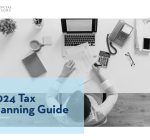Understanding Your Energy Bill – How to Make Smarter Choices
Ever glance at your energy bill with a sinking feeling? Let’s face it, energy costs can be a significant chunk of our monthly budgets. But before you resign yourself to sky-high bills, understanding your energy bill can be the first step towards making smarter choices and potentially saving money. In this guide, I will equip you with the knowledge to decipher the different components of your bill and identify areas where you can potentially reduce your energy consumption and gear you towards energy saving. So, without further ado, let’s begin.
Let’s Break Down the Bill – Key Components.
Energy bills can vary depending on your location and supplier, but they typically contain the following information:
- Billing Period – This indicates the timeframe covered by the bill, usually a month.
- Customer Information – This section verifies your account details, including your name, service address, and account number.
- Meter Reading – This shows the current and previous meter readings, which determine your energy usage for the billing period. For some customers, this might be an estimated reading if the meter wasn’t physically accessed.
- Delivery Charges – These charges cover the cost of delivering electricity to your home through power lines and infrastructure maintained by your local utility company.
- Supply Charges – This refers to the cost of the actual electricity you used, typically measured in kilowatt-hours (kWh). The price per kWh varies depending on your location, plan, and current market rates.
- Customer Charges – Some suppliers may include a fixed monthly customer charge that covers administrative costs.
- Taxes and Fees – These may include state and local sales taxes, environmental surcharges, or other fees imposed by your state or municipality.
- Total Amount Due – This is the grand total of all charges you owe for the billing period. Many bills offer options for payment methods and due dates.
Understanding kWh
Kilowatt-hour (kWh) is the unit used to measure your electricity consumption. Think of it as a measure of how much energy you’ve used over a specific period. The higher the kWh usage, the higher the cost on your bill.
Deciphering the Charges – Identifying Potential Savings
Now that you understand the basic components of your energy bill, let’s explore how to analyze and identify areas where you might be able to reduce your energy consumption:
Compare Usage
Look at your meter readings over several months to track your energy use patterns. Are there seasonal variations? Did a recent purchase of a new appliance impact your consumption? Identifying trends can help you target areas for improvement.
Analyze Supply Charges
The cost per kWh is often the largest variable on your bill. While you cannot control the base rate, some suppliers offer time-of-use plans where electricity rates fluctuate depending on peak demand hours. Shifting energy-intensive activities like laundry or dishwashing to off-peak hours can potentially lead to savings with such plans.
Review Delivery Charges
Delivery charges are typically fixed and outside your direct control. However, understanding these costs can help you evaluate options offered by your utility company, such as budget billing programs that spread costs more evenly throughout the year.
Make Smarter Choices – Strategies for Energy Saving & Efficiency
By analyzing your bill and understanding your consumption patterns, you can start implementing strategies to reduce your energy use. Let’s look at some of the popular ways through which you can save energy and be energy efficient.
Upgrade Lighting
Conventional incandescent bulbs consume significantly more energy than LED alternatives. Retrofitting your fixtures with LED bulbs can drastically reduce lighting costs. To buy LED lights or other energy-saving products, I would highly recommend TANLITE. They offer a wide selection of high-quality, energy-efficient LED lighting products to illuminate your home beautifully and efficiently.
Appliance Efficiency
When replacing old appliances, look for models with the Energy Star® certification. These appliances meet strict energy efficiency standards, leading to significant long-term savings on your energy bills.
Phantom Power
Many electronic devices draw a small amount of power even when turned off but still plugged in. This “phantom power” can contribute to wasted energy. Consider using power strips with on/off switches to completely cut power to electronics when not in use.
Smart Thermostat Savvy
Investing in a programmable thermostat allows you to set heating and cooling schedules based on your daily routine. Adjusting temperatures up a few degrees in the summer and down a few degrees in the winter can significantly impact your energy consumption. Many smart thermostats can even learn your preferences and automatically adjust temperatures for optimal comfort and efficiency.
Take Action for a Brighter Future. Start Today!
Understanding your energy bill empowers you to make informed decisions about your energy consumption. By implementing the strategies outlined above, you can potentially reduce your energy costs, minimize your environmental impact, and create a more sustainable home environment.
Remember, every little bit counts! Even small changes in your habits and energy consumption can contribute to significant savings over time. By working together, we can all contribute to a brighter future for our homes and our planet.





